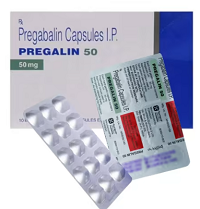
Neuropathic pain, a complex and often debilitating condition, arises from damage or dysfunction within the nervous system. Unlike nociceptive pain, which is a direct result of tissue damage, neuropathic pain is linked to the nerve fibers themselves, causing them to send incorrect signals to pain centers in the brain. This article delves into the best treatment options available for managing neuropathic pain, providing a comprehensive overview to help patients and healthcare providers make informed decisions.
Understanding Neuropathic Pain
Neuropathic pain is typically characterized by sensations such as burning, stabbing, or shooting pain. It can be a result of various conditions including diabetes, shingles, chemotherapy, multiple sclerosis, and spinal cord injuries. The chronic nature of this pain often leads to significant impacts on the quality of life, making effective management crucial.
Pharmacological Treatments
Anticonvulsants
Anticonvulsants such as gabapentin and pregabalin are commonly prescribed for neuropathic pain. These medications work by stabilizing electrical nerve activity and reducing pain signals. Gabapentin is often used for conditions like postherpetic neuralgia and diabetic neuropathy, while pregabalin has been effective in treating spinal cord injury pain and fibromyalgia.
Antidepressants
Certain antidepressants, particularly tricyclic antidepressants (TCAs) like amitriptyline and nortriptyline, as well as serotonin-norepinephrine reuptake inhibitors (SNRIs) like duloxetine and venlafaxine, have shown efficacy in managing neuropathic pain. These medications alter the chemical messengers in the brain and spinal cord that modulate pain signals.
Topical Treatments
For localized neuropathic pain, topical treatments can be highly effective. Lidocaine patches and capsaicin cream are widely used. Lidocaine numbs the affected area, providing pain relief, while capsaicin reduces pain by decreasing the level of substance P, a chemical involved in transmitting pain signals.
Opioids
While opioids are generally reserved for severe cases due to their potential for addiction and side effects, medications like tramadol and oxycodone can be considered for neuropathic pain that does not respond to other treatments. Their use must be carefully monitored by healthcare professionals.
Non-Pharmacological Treatments
Physical Therapy
Physical therapy plays a vital role in managing neuropathic pain. Techniques such as transcutaneous electrical nerve stimulation (TENS), exercise, and manual therapy can help improve mobility and reduce pain. TENS involves the use of low-voltage electrical currents to interfere with pain signals.
Cognitive Behavioral Therapy (CBT)
Cognitive Behavioral Therapy (CBT) is a psychological approach that helps patients cope with chronic pain by changing negative thought patterns and behaviors. CBT has been shown to be particularly effective when combined with other treatments.
Acupuncture
Acupuncture, a traditional Chinese medicine technique, involves inserting thin needles into specific points on the body. Studies have shown that acupuncture can provide relief from neuropathic pain by stimulating the nervous system and promoting natural painkillers.
Innovative and Emerging Treatments
Spinal Cord Stimulation (SCS)
Spinal Cord Stimulation (SCS) involves implanting a device that sends electrical impulses to the spinal cord, masking pain signals before they reach the brain. SCS has been successful in treating conditions such as failed back surgery syndrome and complex regional pain syndrome.
Peripheral Nerve Stimulation (PNS)
Similar to SCS, Peripheral Nerve Stimulation (PNS) targets specific peripheral nerves. This minimally invasive procedure can be particularly beneficial for localized neuropathic pain that is resistant to other treatments.
Stem Cell Therapy
Stem cell therapy is an emerging treatment that aims to repair damaged nerve tissues and reduce pain. Research is ongoing, but early results indicate potential benefits for conditions like diabetic neuropathy and spinal cord injuries.
Lifestyle and Home Remedies
Healthy Diet
Maintaining a healthy diet rich in vitamins and minerals can support nerve health and reduce inflammation. Foods high in omega-3 fatty acids, such as salmon and flaxseeds, have anti-inflammatory properties that can be beneficial for neuropathic pain sufferers.
Regular Exercise
Regular exercise helps to improve overall health and reduce pain. Activities like swimming, walking, and yoga can enhance physical function and release endorphins, the body’s natural painkillers.
Adequate Sleep
Adequate sleep is crucial for pain management. Poor sleep can exacerbate pain symptoms, so establishing good sleep hygiene practices is essential. This includes maintaining a regular sleep schedule, creating a comfortable sleep environment, and avoiding stimulants before bedtime.
Conclusion
Neuropathic pain requires a multifaceted approach to treatment, combining pharmacological and non-pharmacological strategies. Advances in medical technology and innovative therapies offer hope for more effective management of this challenging condition. Patients should work closely with their healthcare providers to develop a personalized treatment plan that addresses their specific needs.

